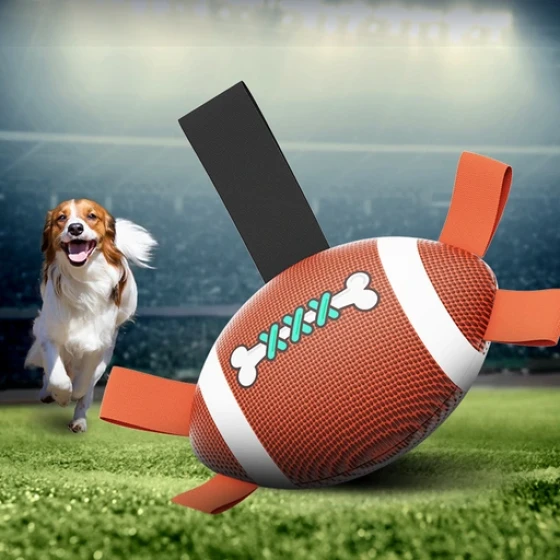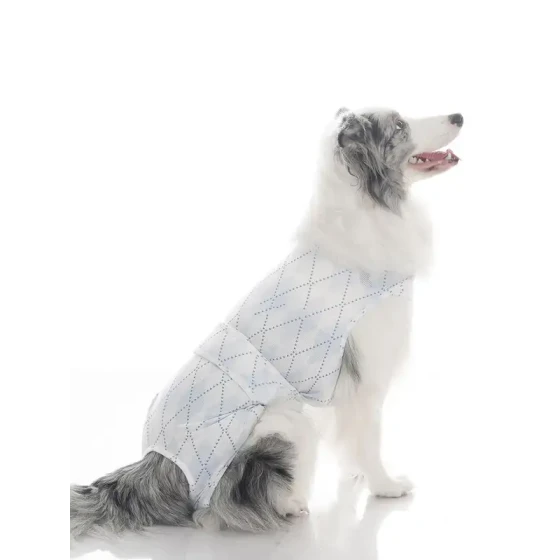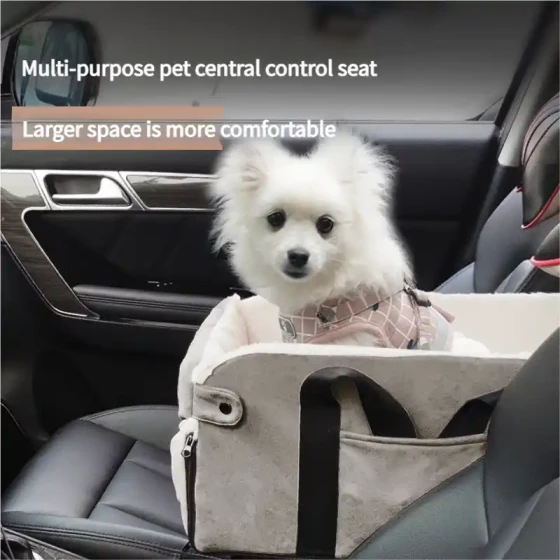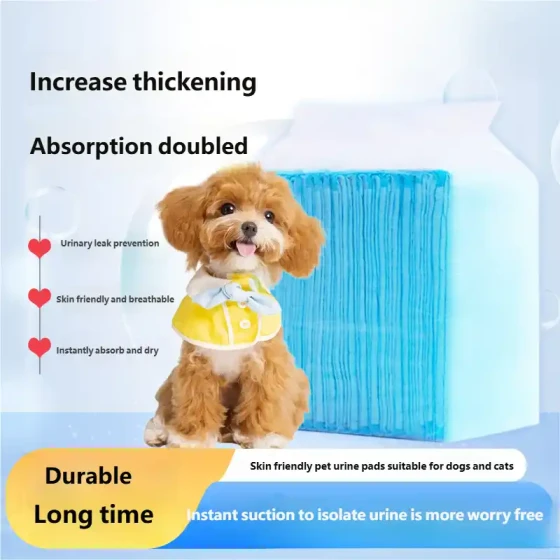Morphological Characteristics of Pomeranian Dogs
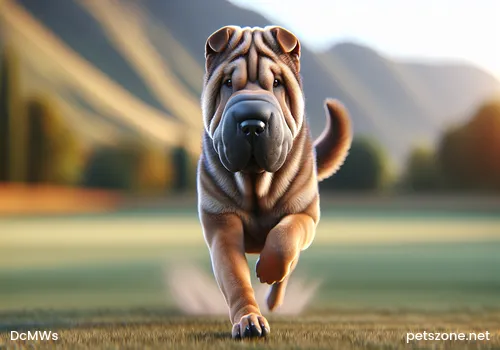
Due to the Pomeranian dog's cheerful personality, loyalty to people, friendliness, and small size, it has attracted many pet lovers' attention. As a small toy dog, the Pomeranian should not be judged only by its petite appearance. In sudden situations, the Pomeranian will also show its brave posture, protecting itself and its owner, and occasionally act affectionately. Pomeranians require regular grooming and are not suitable for owners who are too busy or have no free time. Their magnificent coat not only requires frequent trimming but also daily careful brushing. Because of the dense coat, heavy shedding occurs during molting; frequent cleaning and care are necessary, with a bath once a week being advisable. Due to their small size, females are prone to difficult births.
Morphological Characteristics of Pomeranian Dogs
I. Standard
A. Select dogs with a round head and a short, compact body B. The coat on the back should be soft, erect, and fluffy C. Both eyes and the nose form an equilateral triangle; such a Pomeranian can be called a "beauty face" dog D. The scapula should be high, the chest well-developed, and both fore and hind legs straight without dislocation E. The tail’s tip may be curled or not, but the base of the tail must be high, close to the back, and neatly lay over the back F. The body should be solid, with a tangible weight when held.
II. Appearance
The head and body are proportional, with most of the coat being white, giving a noble temperament. From a distance, it looks like a fluffy ball, very lovable. The weight range of a Pomeranian is 3-7 pounds; the ideal show Pomeranian weight is 4-6 pounds. Dogs outside this range are considered undesirable. Regardless, overall quality is more important than size. The body length (from shoulders to rump) should be slightly less than the height at the shoulders, and the distance from the chest to the ground equals half the shoulder height. Medium bone structure, with leg length balanced proportionally to the body. When touched, it should feel solid.
III. Head
The skull bones are close-fitting, the skull slightly rounded but not domed. The head is proportional to the body, the muzzle short, straight, delicate, can open freely without appearing coarse. Scissor bite. Missing one tooth is acceptable.
From the front or side, small, high-set, erect ears can be seen. The ears are small, set close together, erect ears are preferred, shaped like fox ears. Imagine a line running from the tip of the nose through the middle of both eyes to the ear tips; you will find the Pomeranian’s head is wedge-shaped. (Main faults: too round, domed skull, overshot upper jaw; undershot jaw.) Eyes are dark-colored, bright, medium-sized, and almond-shaped. Positioned on either side of the prominent stop of the skull. The expression is alert, somewhat fox-like.
The Pomeranian’s nose leather and eye rims are black, except brown, beaver, and blue Pomeranians whose colors match their coat color.
IV. Face
Nose: Round, small, and black. (The brown fox dog’s nose is dark brown.) Muzzle: Not too long, proportionate to the skull. (In plush wolf dogs/ruff dogs and medium fox dogs, the muzzle-to-skull length ratio is about 2:3; in small and toy fox dogs, about 2:4.)
Lips: Not exaggerated, tight against the jaws, no folds at the corners of the mouth. (Brown fox dog lips are brown; others are black.) Jaws/teeth: Both jaws normally developed, 42 teeth with a complete scissor bite, conforming to canine dental rules where upper and lower teeth fit tightly, jaws forming a square shape. (Small and toy fox dogs may lack premolars. Pinch bite is acceptable in all fox dogs.) Cheeks: Rounded, not prominent.
Eyes: Medium-sized, elongated, slightly oblique, almond-shaped, black. Eyelids are various shades of black (brown fox dog eyelids are dark brown).
Ears: Small, set high, relatively close together, triangular, pointed, erect with hard tips.
Neck: Medium-length, wide, slightly arched, with no dewlap. Thick, abundant coat forms a large ruff.
V. Body
Topline: The topline starts from the erect ear tips, smoothly joining a short, straight back forming a soft curve. The dense coat and broom-like tail partially cover the back, perfecting the outline.
Withers/Back: High withers slope gently down to a very short, straight, strong back.
Loin: Short, wide, and strong.
Croup: Wide, short, not sloping.
Chest: Deep, naturally expanding, well-developed forechest.
Abdominal line: The chest extends backward as far as possible; the abdomen only slightly tucked up.
Tail: Set high, medium length, extends upward and curls forward over the back, root straight. Lies tight on the back, covered by very dense coat. The tail tip may be doubly curled.
VI. Forequarters
Straight and quite wide in front. Scapula is long and naturally sloped backward. The upper arm is about equal in length to the scapula and forms a 90-degree angle with it.
Muscles of the shoulder are developed and firmly connected to the chest. The elbow is strong, close to the chest, neither turning out nor in. The forearm is of moderate length, sturdy, straight. Good feathering on the back of the forearm.
Metacarpal bones (brace bones) are strong and moderately long. When standing, the front brace bones form a 20-degree angle with the vertical. The front feet are as small, round, and compact as possible, hence called "cat feet," with naturally arched toes. Toenails and paw pads vary in shades of black, but those of brown dogs are dark brown.
VII. Hindquarters
The hind muscles are very developed and richly feathered down to the hock. Hind legs stand straight and parallel when viewed from behind. The upper and lower thigh lengths are about equal.
The stifle is strong with appropriate angles, neither turning out nor in. The metatarsus (hock) is moderately long, very strong, and perpendicular to the ground.
The hind feet are as small, compact, and naturally arched as possible, also known as "cat feet." Paw pads are rough. Toenails should be as black as possible.
Gait/Movement: The German fox dog moves straight forward with good drive, cohesive, and elastic action.
Skin: Tight, with no wrinkles.
VIII. Coat
The German fox dog has a double coat: the topcoat is long, straight, and erect; the undercoat is short, thick, and cottony. The head, ears, front and rear legs' fronts, and feet are covered with short, thick (soft) hair. The rest of the body has long, abundant hair. It is not curly, wavy, or corded and does not part on the back. The neck and shoulders have a coarse mane. Good feathering on the back side of the front legs. Abundant feathering from the croup to the hock on the hind legs. The tail looks broom-like.
IX. Colors
1. Plush Wolf Dog/Rough Dog: Various shades of gray.
2. Large Fox Dog: Black, brown, white.
3. Medium Fox Dog: Black, brown, white, orange, dark gray, other colors.
4. Small Fox Dog: Black, brown, white, orange, dark gray, other colors. Piebald Pomeranians e) Toy Fox Dog/Squirrel Dog: Black, brown, white, orange, dark gray, other colors.
A. Black Fox Dog: For black fox dogs, undercoat and skin must also be black; the top color must be bright black without any white or other colored markings.
B. Brown Fox Dog: Brown fox dogs should be uniformly dark brown.
C. White Fox Dog: The coat must be pure white without any other color, especially yellow spotting commonly seen around ears.
D. Orange Fox Dog: Orange fox dogs should be uniformly in the mid-range of the orange spectrum.
E. Dark Gray Fox Dog/Rough Dog: Dark gray dogs are silver-gray dogs with black-tipped hair. Their muzzles and ears are dark black; the eye area is clearly outlined like a pencil-drawn black line extending from the outer eye corner down to the lower eye corner, forming expressive eyebrows through distinctive marks and shading; mane and ring feathering on shoulders are lighter. Except for pencil-drawn light spots on toes, the front and hind legs below the elbow or stifle have no black markings; tails and "pants" area are light silver-gray.
F. Other Colored Fox Dogs: "Other colors" includes all color shades such as cream, cream-gray, orange-gray, black-and-tan, and parti-color (usually predominantly white). Black, brown, gray, or orange spots must be distributed over the whole body.
X. Size (Height at Withers):
1. Plush Wolf Dog/Rough Dog 49 cm +/- 6 cm.
2. Large Fox Dog 46 cm +/- 4 cm.
3. Medium Fox Dog 34 cm +/- 4 cm.
4. Small Fox Dog 26 cm +/- 3 cm.
5. Toy Fox Dog/Squirrel Dog 20 cm +/- 2 cm.
XI. Weight
Each type of German fox dog should have a weight proportional to its size.
